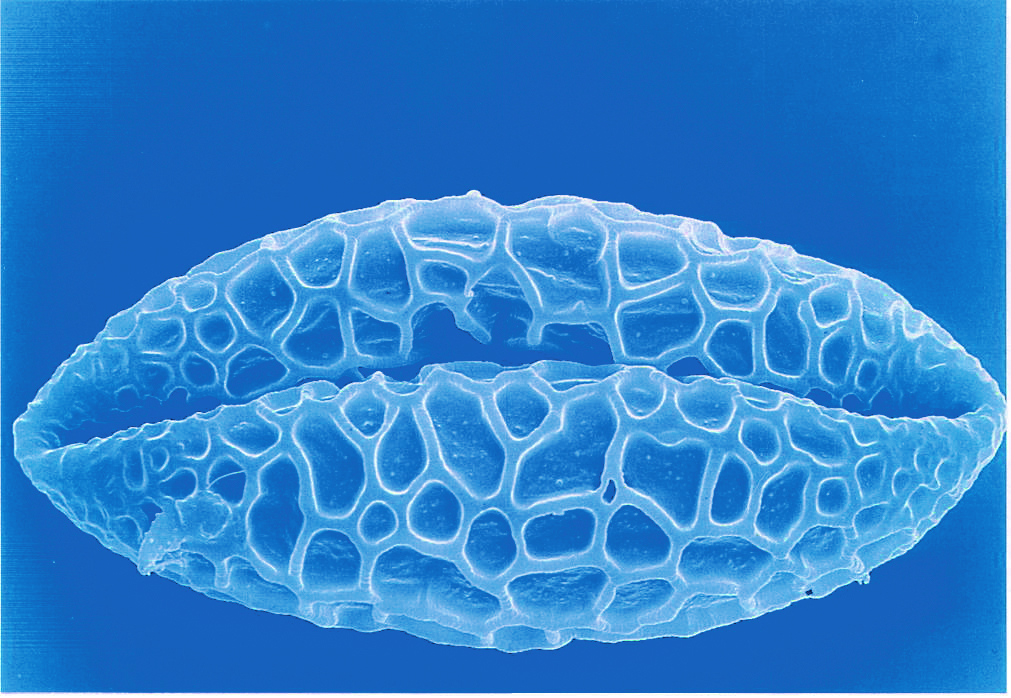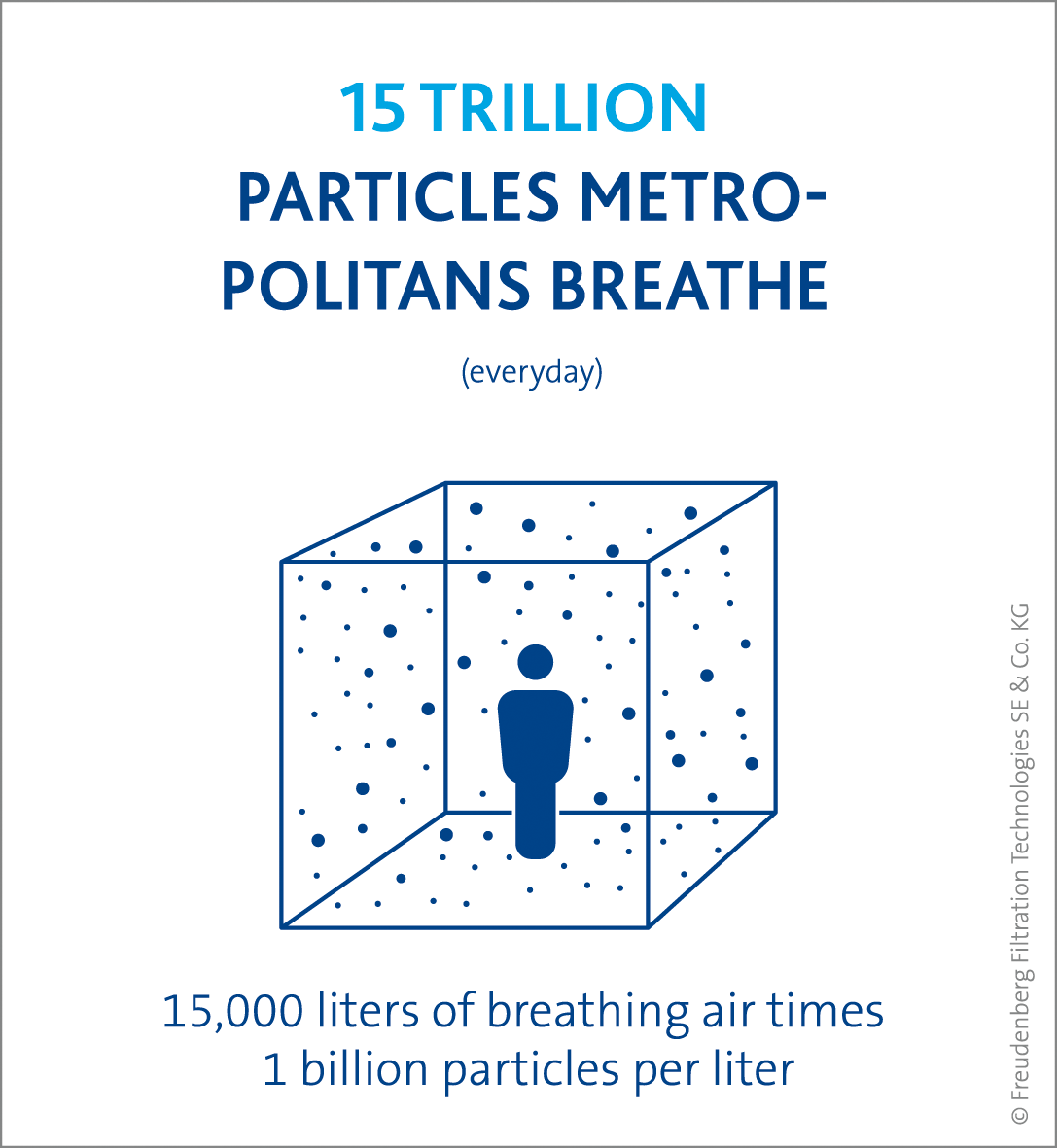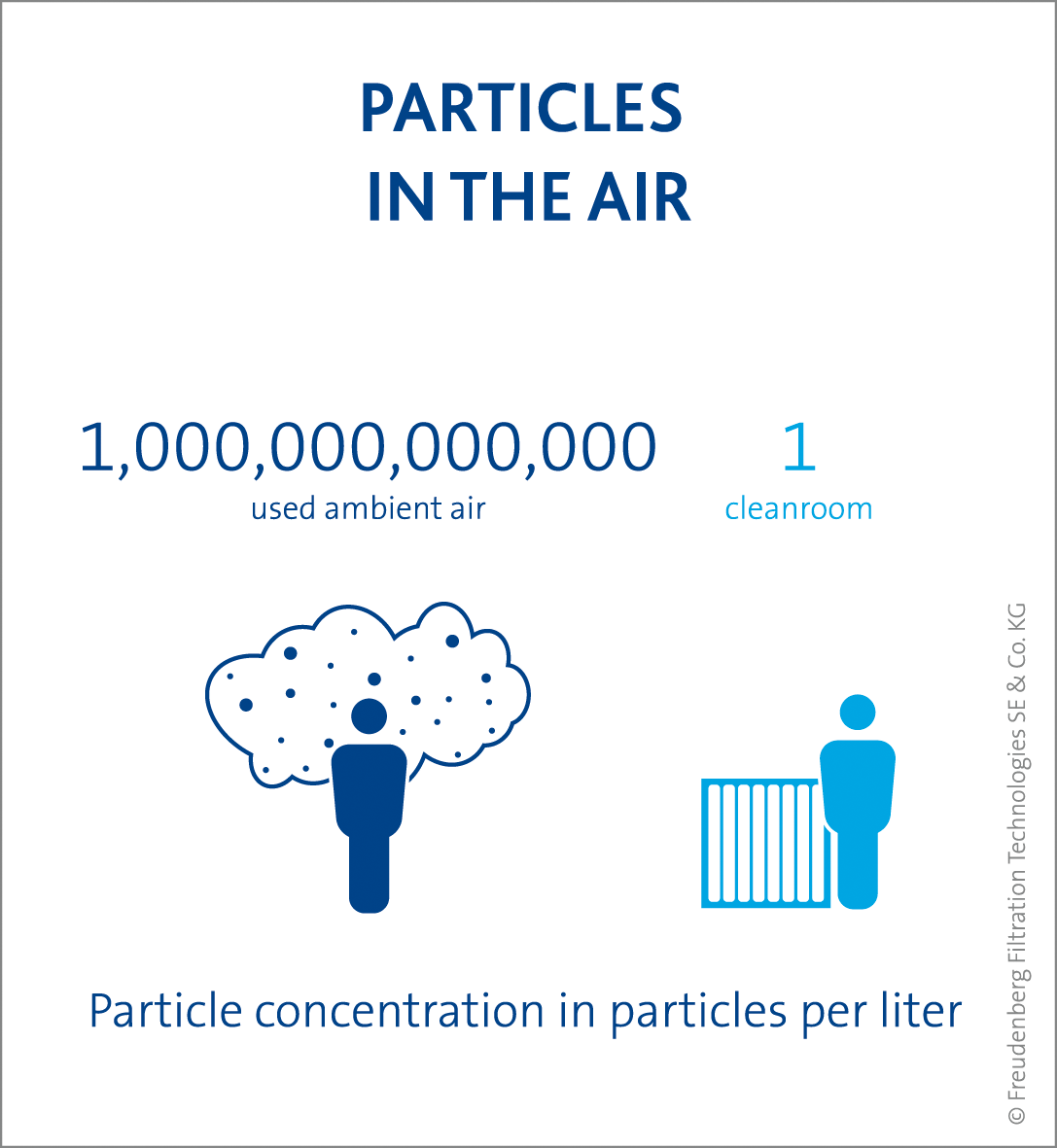Small particles – big impact
Why filtration
Like clean water, clean air is also an elixir of life: invisible but indispensable. People breathe every four seconds, that is roughly 22,000 breaths every day. In 24 hours, each of us breaths in about 15,000 liters of air.
With every breath, large quantities of tiny particles enter our body. Even in presumably healthy rural air, there are millions of particles such as pollen, fungal spores, mold, soot, bacteria and viruses. In a large city, there are thousands of times as many particles, in the billions.
3 million
Fine dust is particularly insidious. Over three million people die every year from the consequences of heavy air pollution with fine dust. In comparison with fine dust, small grains of sand are gigantic boulders. When inhaled, fine dust enters into the deeper respiratory tract and sometimes even moves directly into the blood. Health alert! In vehicles and buildings, where we spend the majority of our time, the air is often much more contaminated than outdoors. Not to mention smoky indoor air with 100 billion particles per liter.
This is why it is so reassuring that our filters and filter systems reliably separate the essential elements of life from the harmful pollutants. So that everyone can breath in deeply. With pure pleasure and a high quality of life! While out for a drive, at the theater, on a cruise ship or just passing the time in the office break room.
Freudenberg filters are even more critical in hospitals, where they keep pathogens such as spores, bacteria and viruses out of operating rooms and intensive care wards. And in industry? In the large paint shops of the automotive industry, roughly 10,000 Freudenberg high-performance filters purify about 15 million cubic meters of air every hour: for brilliantly glossy paintwork – without touch-up costs.
-
What is particulate matter?
The terms “particulate matter” (PM) or “suspended particulate matter” refer to small to tiny particles, which float for a while in the atmosphere and do not immediately fall. These particles are divided into groups according to size. Dust particles with an aerodynamic diameter smaller than 10 microns (1 micron = 1 thousandth of 1 mm) belong in the PM10 class. Just image: an average human hair has diamter of 60-80 microns.
PM10 in turn consists of three subsets:
- Coarse
Particles in the size range from 2.5 to 10 microns - Fine (also PM2.5)
Finer particles in the size range of less than 2.5 microns - Ultra-fine
Tiny particles in the size range of less than 0.1 microns

- Coarse
-
Where does particulate matter come from?
Particulate matter can be either natural or man-made. Man-made sources of particulate matter include, for example, cars and trucks, incinerators, power and heating plants, stoves and heaters in the home or within agricultural and industrial processes. In the urban environment, traffic also plays a significant role. In this setting, particulate matter is created from diesel soot, fine brake and tire wear and road dust. Natural sources of particulate matter include, among other things, emissions from volcanoes and seas, soil erosion, forest and brush fires, viruses, bacterial and fungal spores, and algae or cell particles.
-
Why is particulate matter dangerous?
According to studies by the World Health Organization (WHO), air polluted with particulate matter reduces average life expectancy in Germany by ten months. Of all air pollutants, the small and smallest particles have the greatest impact on our health. The highest levels of particulate pollution are found in cities. This is why we are seeing an increasing number of environmental zones being established in cities, which may only be entered with an appropriate emissions sticker.
The inhalation of fine particulate matter has a three-stage negative impact on our health:
- Hazardous substances, such as heavy metals and carcinogenic polycyclic aromatic hydrocarbons, can attach themselves to the surface of fine and tiny particulates.
- Due to their small size, particulates are a danger in themselves. When inhaled, particles smaller than about 2 microns reach into the lower respiratory tract, are excreted in the lungs and cannot be exhaled again. In this way they become actual deposits. These so-called ‘respirable’ particles are particularly harmful to health. The problem is that particles of this size can only to a limited extent be captured by the mucous membranes in the nose and throat or by the nose hairs.
- Ultrafine particles (smaller than 0.1 microns) can be transferred via air sacs into the blood stream and thus spread by the blood throughout the body.
Conclusion: particulate matter is harmful to health. This is true as much for increased concentrations over a short period of time as for low level exposure over a longer period. For this reason, we should aim to minimize particulate pollution exposure at all times.- What substances are in the air?
There are many sources of air contaminants indoors, such as pets or evaporatings of paints and coatings. But also through open windows and doors pollen, exhaust and other particles get into the indoor air. Air pollutants of gaseous and particulate types come from a variety of sources. You can differ between natural and manmade contaminants. Further the natrual contaminants can be differentiated into organic and inorganic sources.
Natural inorganic sources
- Erosion
- Sandstorms
- Volcanic eruptions
- Forest fires
- Salt water
Natural organic sources
- Pollen
- Fungal spores
- Bacteria
- Virus
A large part of contaminants caused by man are the exhaust gases of engines and the industry, especially sulfur dioxide, nitrogen oxides and soot particles contained to name a few. In addition, abrasion from road traffic (tires, brakes), industrial processes and agriculture make a significant contribution to polluting the air with harmful substances and particles. All of these particles and pollutants extend over a size range of several orders of magnitude. For this reason, many different filters of different classes and types are used for air filtration. In general, a particular filter type or class is only suitable to cover a defined size class range effectively and economically.
 Language / Country
Language / Country





